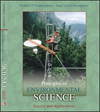 |  Principles of Environmental Science William P. Cunningham,
University of Minnesota
Mary Ann Cunningham,
Vassar College
Solid and Hazardous Waste
Further Readings
| Ackerman, Frank.. Why Do We Recycle?. Covelo, CA: Island Press. (Examines arguments for and against recycling.).
1997 |  |  |  |
| Bartsch, Charles and Elizabeth C. Collaton.. (Island Press). 1997. Brownfields: Cleaning and Reusing Contaminated Properties.: Covelo, CA. (urban lands are a serious barrier to community development.).
Unused, contaminated |  |  |  |
May/June | Brand, Martha and John Herman... "Brownfields in Bloom: Restoring Contaminated Properties,". : Bench & Bar. (Legal issues in Superfund reclamation.).
1997 |  |  |  |
A revised classic in the field of environmental justice. | 1997: 33-37.. (Dumping in Dixie: Race, Class, and Environmental Quality 3rd ed.). . Bullard, Robert D.: 2000. (Westview Press.).
Boulder, CO |  |  |  |
| Buenrostro, O, G. Bocco, and S. Cram.. (2001). "Classification of sources of municipal solid wastes in developing countries". : Resources, Conservation and Recycling. (32(1): 29-41).
Research on sources and types of wastes in developing countries. |  |  |  |
| Burgos, M. G., and P. S. Rainbow.. (2001). "Availability of cadmium and zinc from sewage sludge to the flounder, Platichthys flesus, via a marine food chain.". : Marine Environmental Research. (Heavy metals in sewage sludge represent a serious threat to marine food webs.).
51(5): 417-439. |  |  |  |
| Edelstein, Michael.. (2001). Contaminated communities: Psychosocial Impacts from the Contamination of Home and Place 2nd ed.. Boulder, CO:: Westview Press..
A psychosocial, view of toxic contamination and its effects. |  |  |  |
| Faber, D.. (1998). The Struggle for Ecological Democracy: Environmental Justice Movements in the United States.. New York: Guilford.
Examples and case studies from the environmental justice movement. |  |  |  |
| Gardner, Gary and Payal Sampat.. (1999). "Making Things Last: Reinventing Our Material Culture.". : The Futurist.. (May 1999: 24-28.).
Good tips on how we can reduce trash production. |  |  |  |
| Greenpeace.. (1997). "Stop Shintech's PVC Machine,". : Greenpeace Quarterly. (2(1):10.).
Local residents in Louisiana's "cancer alley" organize to resist more pollution. |  |  |  |
| Horrigan, Alice and Jim Motavalli.. (1997). "Talking Trash,". : E Magazine. (8(2):28-35.).
Recycling is under attack, but its successes outweigh its setbacks. |  |  |  |
| Langewiesche, William.. (2000). "The Shipbreakers,". : Atlantic Monthly. (262 (2): 31-51.).
A chilling story of how obsolete ships are dismantled on the beach at Anlang, India. |  |  |  |
| Low, N. and B. Gleeson.. (1998). Justice, Society and Nature: An exploration of political ecology. London: Routledge.
A comprehensive discussion of the roots of environmental justice. |  |  |  |
| Montague, Peter.. (1997). "A New U.S. Waste Strategy Emerges, Part I," Rachel's Environment & Health Weekly #560. Annapolis, MD: Environmental Research Foundation..
Web site: http://www.monitor.net/rachel/ |  |  |  |
| O'Neill, K.. (2000). Waste Trading Among Rich Nations.. Cambridge, MA: MIT Press.
Most hazardous waste shipments are between wealthy industrialized countries. What are its effects and how should it be regulated? |  |  |  |
| Ryan, John C. and Alan T. Durning.. (1997). Stuff: The Secret Lives of Everyday Things.. Seattle: Northwest Environment Watch.
What happens to all our stuff when we discard it? |  |  |  |
| Tammemagi, Hans Y.. (1999). The Waste Crisis: Landfills, Incinerators, and the Search for a Sustainable Future.. Oxford, UK: Oxford University Press.
A global overview of the problem of waste disposal. |  |  |  |
| Taylor, D. (ed).. (2000). "Advances in Environmental Justice,". : American Behavioral Scientist 43(4):January 2000.
A special issued devoted to this topic. |  |  |  |
| Warren, K.. (1999). "Environmental Justice,". : Environmental Ethics. (21(2): 151-160.).
An ecofeminist view of justice. |  |  |  |
| Zago, C. et al.. (2001). "Changes in the metal content of superficial sediments of Boston Harbor since the cessation of sludge discharge.". : Marine Environmental Research. (51(5): 389-415.).
Dumping of sewage sludge into Boston Harbor created an anoxic zone laden with toxic metals, which will remain in sediments for years. |  |  |  |
|



 2002 McGraw-Hill Higher Education
2002 McGraw-Hill Higher Education